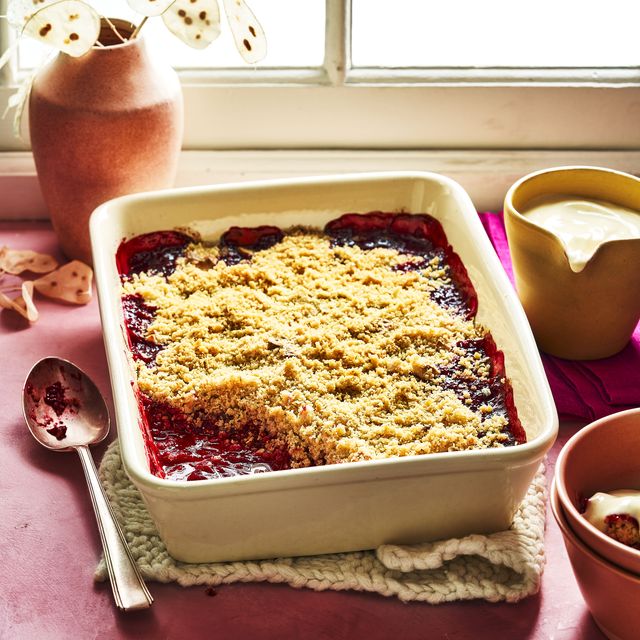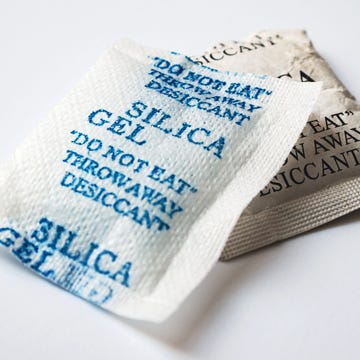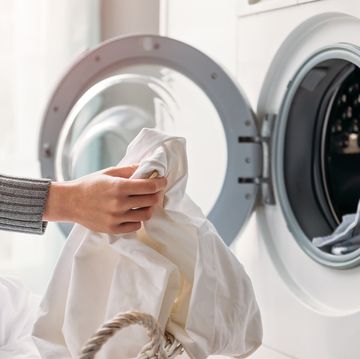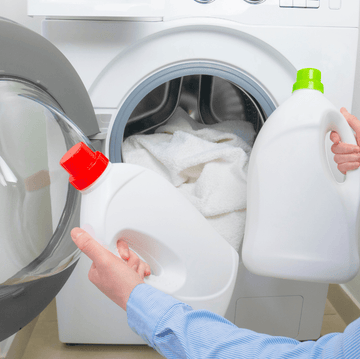We use our ovens to cook all kinds of delicious dishes, saffron-baked potatoes and spicy pumpkin wedges included. But with daily use, bad habits can quickly develop; anything to help us cut corners and save on time! While some might seem harmless at first, they can create all kinds of problems, from impacting the quality of what you cook all the way through to creating a safety hazard in your kitchen.
Want to know what we’re talking about? We’ve found seven bad habits to break with your oven, so you know what not to do.
1. Not using all the settings
Be honest with yourself: do you know what every setting does? If the answer is no, you’re not alone! A recent survey by AEG found that a whopping 75% of us don’t know how to use every setting on our oven – that’s despite 56% of us having owned it for more than three years.
What to read next
Each oven setting is designed to deliver cooking conditions to suit different recipes. It’s important to understand the differences so you can get the best performance from your oven. For instance, the fan setting is ideal for distributing the hot air around the oven, which is perfect for baking, roasting and crisping on multiple levels, but it does create dry conditions that won’t work for every recipe. The conventional setting (one line at the top and bottom of the square) heats from above and below, which makes it better for retaining moisture – ideal for baking cakes.
Sometimes you may have a combination of settings, such as top and bottom heat singularly, with or without the fan setting. Always read the manual to understand what each of these settings offer and where they might come in useful. For instance, bottom heat is ideal for browning the base, while the fan and grill combined will provide better heat distribution.
2. Skipping the preheat
The same survey found that 18% of us skip preheating the oven. This isn’t always a bad thing, but it’s not something you should do for every meal.
According to GH’s cookery editor Emma Franklin: “Preheating your oven is essential for anything where you want to follow the recipe’s timings, as starting in a cold oven will make things take longer. However, it’s not essential for everyday cooking at home if you’re prepared to use your own judgement on when something’s cooked to your liking.
“It’s usually fine to skip the preheat with stews, casseroles or anything else with a high liquid content (including pasta bakes and similar dishes). But for anything involving pastry, bread or other baking, it really is crucial – pastry cooked in a cold oven is likely to melt rather than brown.”
Equally, it’s important not to leave your oven preheating for longer than necessary – otherwise, you’re just wasting energy. The majority of ovens feature a thermostat with a small light that switches off once it reaches temperature, but this is easy to miss unless you’re prepared to watch your oven like a hawk. So it’s best to set an alert on your oven (if possible) or your phone once you know roughly how long it needs.
3. Opening the door too soon
As tempting as it is to open your oven door and peek at the progress, you should try to avoid doing this. It takes a lot of energy to heat your oven to temperature and once you open the door, all that heat is instantly released. If you need to keep cooking, your oven’s then back to square one, which adds to your energy bill and the time until your meal’s ready.
Instead of opening the door, look through the glass window to check the progress of your food. This is much easier to do it you keep the window clean (which leads on to our next point).
When the time does come to open the oven door, don’t hold your face directly over it! This is dangerous considering how much heat is released in a focused space. Keep yourself suitably distanced until the initial heat is released.
4. Not cleaning it between uses
Cleaning the oven is no one’s favourite chore, but it’s an important one – especially if you want to prevent build-up. As well as deep cleaning it every three months or so with a proprietary oven cleaner, such as Oven Mate, you should be spot-cleaning between uses.
That means waiting for the oven to cool sufficiently, then using a microfibre cloth with some soapy water to pick up immediate spills and stains. You’ll want to remove these as soon as possible, as otherwise they’ll burn into place the next time you use your oven, making them trickier to clean. They’ll also start to smoke, which not only impacts the flavour of what you cook but is a potential fire and health hazard.
Pay particular attention to the base of your oven, as well as the glass door. Look out for oil on the grill tray, too; this can easily get coated after use. If a deeper clean is needed, heat an oven-safe bowl of water in the oven for 20 minutes, then once it’s filled with steam, switch it off, let it cool and wipe it down.
Most ovens come with ‘pyrolytic’ self-cleaning functions, too. But keep in mind that these will make your oven unusable for a few hours, and you’ll need to remove any obvious residue yourself first. Be prepared for a horrible smell during this process as well.
Clean the right way
HERE'S HOW TO DEEP CLEAN AN AIR FRYER
HOW TO CLEAN A HOB AND KEEP IT SCRATCH-FREE
THE RIGHT WAY TO CLEAN A MICROWAVE
5. Not filling it
While it’s not always convenient, you should take full advantage of your oven as it runs. That means filling it to capacity across both the shelves and levels whenever possible. By making the best use of this space, you’re saving yourself from potentially running it again down the line, which means less energy usage.
The best way to do this is to pre-plan each use of the oven, considering the time, temperature and program you will need to set. Then consider what other meals might be suitable to cook alongside. Once you know what works well together, it’ll be easier to fill the space.
You can cook all kinds of items at once in the oven – it comes in handy for preparing lunches in advance for work as well as midweek meals. If you have more to cook, try to batch cook in succession to make best use of the residual heat. But if you really can’t fill the oven, consider buying an air fryer instead. These are essentially mini convection ovens that will save you time and money if you only cook smaller portions.
6. Using a tea towel
I’m guilty of this one myself, but it really is a habit to break. Using a tea towel to move items in and out of the oven is unlikely to provide adequate protection from the heat. Plus, should you spill hot liquid on yourself, there’s nothing to guard against burns, and there’s the lack of grip to think about, too. All in all, it’s not worth the risk.
Stick to using a quality pair of oven gloves for guaranteed protection. Make sure you can grip well and keep an eye out for damage with everyday use. Replace these as needed.
7. Putting items on the floor of the oven
Items shouldn’t sit on the floor of your oven; the reason being that it impairs heat distribution around the interior. Always use a wire shelf to elevate what you’re cooking and use the most appropriate level.
Cookery editor Emma says: “Avoid putting items, including baking trays, on the very bottom of the oven. This can prevent hot air circulating properly and, since the bottom of the oven usually houses the main heating element, it can lead to your food burning. The bottom shelf is fine, though – this is the place to put things that benefit from that bottom heat – bread, meringues, egg custards and quiches or tarts, and of course large casserole dishes that wouldn’t fit if they were higher up.
“The middle shelf is the one to use for most of your cooking, as it’s where you’ll find the most even heat (even in a fan oven). And since hot air rises, the top of the oven is the place to put anything you want to cook as fast as possible, such as pizza, and if your oven has an integrated grill, it’s the place to put anything for that, too.”
The only thing that can sit on the floor of your oven (if there are no exposed heating elements here) is an oven liner. These come in handy for catching spills and can be cut to size and run through the dishwasher when needed. Just remember to replace it when necessary.



































